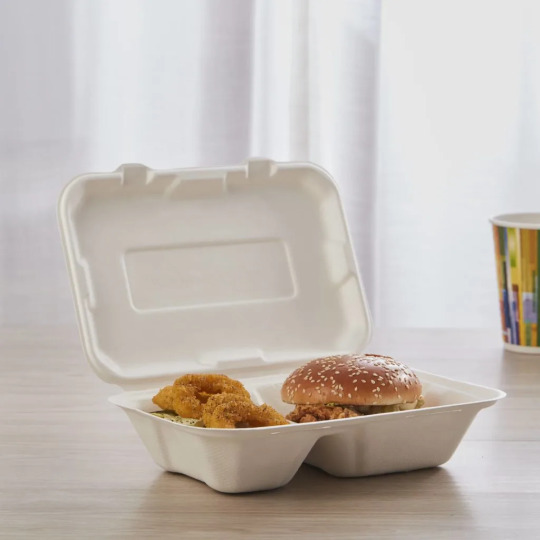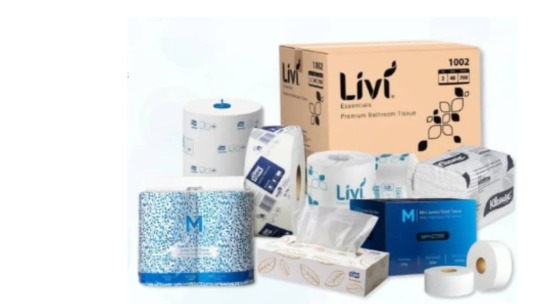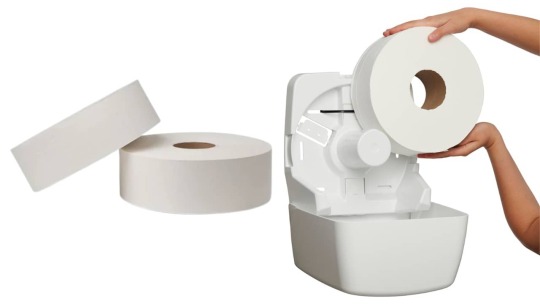#Biodegradable solutions
Explore tagged Tumblr posts
Text

HPI/CUDA APW Detergents provides a comprehensive selection of industrial cleaning solutions tailored to various needs. From heavy-duty powder detergents to specialized formulations for sensitive metals, their range addresses a wide array of cleaning challenges across different industries. With a focus on effectiveness, biodegradability, and corrosion resistance, these detergents offer reliable performance while ensuring environmental responsibility. Whether for removing tough coatings, brightening surfaces, or degreasing equipment, HPI/CUDA APW Detergents stands as a trusted partner for industrial cleaning needs.
#Industrial Cleaning#Detergents#Corrosion Resistance#Biodegradable Solutions#Heavy-Duty Cleaning#Metal Cleaning#Powder Detergents#Environmental Responsibility#Degreasers#Surface Brightening
0 notes
Text
Green & Bio-Solvents Market: Sustainable Solutions for a Cleaner Future
The total size of the green & bio-solvents market was USD 3,128.5 million in the past, and it will propel at 6.1% CAGR in the years to come, to reach USD 5,322.2 million by 2030, as per P&S Intelligence. The industry development is credited to the and environmental and health concerns related to synthetic solvents. Paints & coatings dominated the industry in the past, with around USD 1.2…

View On WordPress
#Bio-based solvents#Biodegradable solutions#Chemical sector#Clean manufacturing#Eco-conscious industries#Eco-friendly alternatives#Environmental innovation#Green chemistry#Green solvents#Green technology#Industrial applications#Low carbon footprint#market growth#Regulatory compliance#Renewable resources#Solvent industry#Solvent market trends#Sustainable chemistry#Sustainable sourcing
1 note
·
View note
Text
Eco Revolution: How the Straw Paper Market is Transforming Industries

Introduction: The Rise of Sustainable Alternatives in the Straw Paper Market
In recent years, the global straw paper market has experienced significant growth, driven by the increasing consumer demand for eco-friendly products and the mounting pressures to reduce plastic waste. As environmental concerns intensify, industries across the world are embracing sustainable alternatives, with paper straws emerging as a prominent solution to replace single-use plastics. The market, valued at USD 5 billion in 2023, is projected to surpass USD 11.7 billion by the end of 2032, with a robust CAGR of 9.6% between 2024 and 2032.
Governments worldwide are implementing stricter regulations regarding the use of single-use plastics, providing further momentum to the market. Similarly, heightened consumer awareness about the environmental impact of plastic waste has bolstered the demand for sustainable, biodegradable alternatives. As such, the straw paper market is well-positioned for sustained growth, with significant opportunities for innovation in product design, material composition, and manufacturing processes.
Request Sample Report PDF (including TOC, Graphs & Tables): https://www.statsandresearch.com/request-sample/40602-global-straw-paper-market
Key Straw Paper Market Drivers and Emerging Trends:
1. Environmental Awareness and Regulatory Pressures
The growing concerns about plastic pollution—especially in oceans and landfills—are compelling both businesses and consumers to seek environmentally friendly alternatives. With legislative action across countries such as bans on plastic straws and packaging, the demand for paper straws continues to rise. Local governments and international organizations are increasingly endorsing sustainable practices, with plastic reduction initiatives supporting the shift toward biodegradable packaging solutions.
2. Adoption of Eco-Conscious Lifestyles
As sustainability becomes a central theme in consumer behavior, the demand for sustainable products extends to daily-use items like straws. The eco-conscious consumer increasingly prefers products that are recyclable, biodegradable, and chemical-free, leading to a surge in paper straw adoption. This transition reflects broader trends toward circular economies, with consumers seeking to minimize their environmental footprints.
3. Technological Advancements in Paper Straw Manufacturing
To meet the growing demand for high-performance, eco-friendly straws, manufacturers are focusing on technological innovations in materials and coatings. For instance, paper straws are now being engineered with water-resistant and biodegradable coatings to maintain durability in beverages, hot or cold. Furthermore, some manufacturers are introducing customized straw designs, catering to both functional needs and aesthetic preferences.
Get up to 30% Discount: https://www.statsandresearch.com/check-discount/40602-global-straw-paper-market
Straw Paper Market Segmentation Analysis
The global straw paper market can be categorized based on various factors, including product type, material type, application, and distribution channel. These segments provide a deeper understanding of the market dynamics and help businesses tailor their strategies to capitalize on emerging trends.
1. By Type: Flexible vs. Non-Flexible Paper Straws
Flexible Paper Straws: Dominating the market with a share of approximately 63% in 2023, flexible paper straws are popular in foodservice sectors such as quick-service restaurants (QSRs) and healthcare settings. These straws offer ease of use and are preferred for their ability to bend, making them ideal for various applications.
Non-Flexible Paper Straws: This segment is seeing consistent growth, particularly in cafes and retail settings, where durability and strength are essential. Non-flexible paper straws are valued for their sturdiness and are increasingly used for premium beverages.
2. By Material Type: Virgin Paper vs. Recycled Paper
Virgin Paper Straws: These straws are favored for their strength, smooth texture, and high-quality finish, making them a preferred choice for high-end beverage brands. The virgin paper segment accounted for 54% of the market share in 2023 and is projected to grow at a CAGR of 9.3% until 2032.
Recycled Paper Straws: Driven by increasing environmental concerns, the recycled paper segment is gaining momentum, with businesses investing in sustainable raw materials to reduce waste. The segment is expected to expand at a CAGR of 10.2%, as regulatory pressures encourage circular economy practices.
3. By Product Type: Printed vs. Non-Printed Straws
Printed Paper Straws: The demand for printed straws, which accounted for 41% of the market share in 2023, is rising as businesses seek to leverage custom branding for marketing and promotional purposes. These straws are particularly popular in the food and beverage industry, where branding plays a significant role in consumer choices.
Non-Printed Paper Straws: With a growing emphasis on minimalism and eco-conscious choices, non-printed straws are gaining traction, especially among consumers who prefer less processed and branded products. Additionally, the unwrapped segment is popular in dine-in restaurants and casual beverage outlets.
4. By End-Use Industry: Food & Beverage, Healthcare, Hospitality, and Household
Food & Beverage: Leading the market with a dominant share of 59%, the food and beverage sector continues to drive demand for paper straws. This trend is especially prevalent among fast-food chains and coffee shops that are transitioning to sustainable alternatives in compliance with government regulations.
Healthcare: Paper straws are increasingly used in healthcare facilities such as hospitals and care homes, where hygiene and patient comfort are paramount. The use of straws for medical purposes, such as in patient care, is expanding.
Hospitality: Hotels, resorts, and event venues are embracing eco-friendly straws to align with their sustainability initiatives. This trend is boosting the adoption of paper straws in the hospitality industry.
Household: Growing awareness of plastic pollution is also reflected in consumer behavior at the household level. More consumers are purchasing paper straws for use at home, particularly in regions with stringent plastic bans.
5. By Distribution Channel: Online vs. Offline Retail
Offline Retail: Supermarkets, hypermarkets, and specialty stores remain the dominant channels for paper straw distribution. With their widespread availability and the opportunity for in-store evaluation, offline retail accounts for 69% of the market share.
Online Retail: The online retail segment is growing rapidly, with a CAGR of 10.6% through 2032. E-commerce platforms and subscription-based services are becoming popular for buying paper straws, driven by the increasing consumer preference for convenient, door-to-door deliveries of sustainable products.
Regional Straw Paper Market Insights
1. North America
North America, particularly the United States and Canada, remains the largest market for paper straws, accounting for 38% of global market share in 2023. Strong regulatory pressures on plastic waste and high consumer demand for sustainable products are key drivers of growth in this region. The region is also home to several leading fast-food chains that are transitioning toward paper straws to comply with environmental regulations.
2. Europe
Europe is another major player in the global straw paper market, driven by stringent regulations and high consumer demand for sustainable products. The European market is expected to see continued growth, with increasing investments in eco-friendly manufacturing processes and renewable resources.
3. Asia-Pacific
Asia-Pacific is witnessing rapid growth, fueled by increasing awareness of environmental issues and rising demand for sustainable products. The region's diverse consumer base and growing middle class provide ample opportunities for market expansion.
4. South America & Middle East Africa
In regions like South America and the Middle East & Africa, demand for paper straws is rising as consumers and businesses adopt more sustainable practices in response to both local regulations and global sustainability trends.
Competitive Landscape and Key Straw Paper Market Players
The global straw paper market is highly competitive, with several leading players driving innovation, sustainability, and market expansion. Key players in the market include:
Dinearth
UFlex Limited
Transcend Packaging Ltd.
Huhtamaki OYJ
Footprint
Fuling Global Inc.
Hoffmaster
Bygreen
BioPak
Canada Brown Eco Products Ltd.
These companies are focusing on technological advancements, such as the development of water-resistant, biodegradable coatings, to enhance the functionality and performance of paper straws. Partnerships and strategic collaborations are also helping companies strengthen their position in the market.
Noteworthy Developments:
Dinearth & UFlex Limited: In December 2024, these two companies announced a strategic partnership to develop biodegradable paper straws with advanced water-resistant coatings. This innovation aims to balance durability and compostability, setting new standards in the industry.
Footprint & BioPak: In August 2023, these companies introduced a premium range of fully recyclable paper straws made from FSC-certified paper, catering to the growing demand for chemical-free alternatives.
Canada Brown Eco Products Ltd. & Shuangtong Daily Necessities Co. Ltd.: These two companies launched bamboo-infused paper straws in June 2023, further diversifying the market by introducing alternative raw materials that offer superior durability and environmental benefits.
Purchase Exclusive Report: https://www.statsandresearch.com/enquire-before/40602-global-straw-paper-market
Conclusion
The global straw paper market is poised for substantial growth over the next decade, driven by an increased focus on environmental sustainability, regulatory changes, and growing consumer awareness of the need to reduce plastic waste. As businesses continue to innovate and meet the demand for sustainable, high-performance products, the market will expand across regions and industries, with significant opportunities for both established and emerging players. The transition toward paper straws is not just a trend, but a fundamental shift in how the world approaches disposable packaging solutions, positioning the industry for a greener and more sustainable future.
Our Services:
On-Demand Reports: https://www.statsandresearch.com/on-demand-reports
Subscription Plans: https://www.statsandresearch.com/subscription-plans
Consulting Services: https://www.statsandresearch.com/consulting-services
ESG Solutions: https://www.statsandresearch.com/esg-solutions
Contact Us:
Stats and Research
Email: [email protected]
Phone: +91 8530698844
Website: https://www.statsandresearch.com
#Straw Paper Market#Eco-Friendly Packaging#Sustainable Paper#Biodegradable Straws#Paper Straws#Eco-Friendly Alternatives#Green Packaging Solutions#Sustainable Products#Straw Paper Industry#Biodegradable Materials#Plastic Alternatives#Eco-Conscious Consumer#Market Growth#Environmental Impact#Paper Straw Manufacturing#Eco Packaging Trends#Straw Paper Trends#Sustainability in Packaging#Global Straw Paper Market#Green Product Innovation#Paper Straw Demand
1 note
·
View note
Photo

20 Bamboo Drinking Straws Set with Carry Bag & Cleaning Brush
Introducing our 20cm Bamboo Straw Set, the perfect eco-friendly alternative to plastic straws. This set includes 20 reusable bamboo straws, a convenient carry bag, and a coconut husk cleaning brush. Say goodbye to single-use plastics and join the sustainable movement!
Made from natural bamboo, these straws offer a smooth sipping experience while being kind to the environment. With a length of 20cm, they fit various drinkware, ensuring you can enjoy your favourite beverages hassle-free.
The included carry bag makes it easy to take your bamboo straws with you wherever you go. Whether it's a picnic, a coffee shop, or a family gathering, you'll always have your eco-friendly straws on hand.
Cleaning the straws is a breeze with our coconut husk cleaning brush. It effortlessly removes any residue, ensuring your straws remain fresh and hygienic. These straws are reusable and can last up to a year with proper care.
When it's time to dispose of them, you can rest assured knowing that bamboo is a naturally biodegradable material. Simply compost them, and they will break down naturally, leaving no harmful traces behind.
Make a small change that has a big impact with our Bamboo Straw Set. Join the movement towards a greener future and enjoy guilt-free sipping.
#Assistive bamboo straws for disabilities#Inclusive drinking utensils#Eco-friendly bamboo straws#Durable bamboo straws for disabilities#Sustainable drinking straws#Eco-conscious drinking options#Reusable bamboo straws#Ergonomic bamboo straws#Biodegradable straws#Long-lasting straws for disabled individuals#Bamboo straws for disabled individuals#Sustainable alternatives for disabled people#Disability-friendly straws#Eco-friendly assistive drinking devices#Assisted drinking aids#Adaptive bamboo straws#Accessible drinking solutions
3 notes
·
View notes
Text
"The substances behind the slimy strings from okra and the gel from fenugreek seeds could trap microplastics better than a commonly used synthetic polymer.
Texas researchers proposed in 2022 using these sticky natural polymers to clean up water. Now, they’ve found that okra and/or fenugreek extracts attracted and removed up to 90% of microplastics from ocean water, freshwater, and groundwater.
With funding from the U.S. Department of Energy, Rajani Srinivasan and colleagues at Tarleton State University found that the plant-based polymers from okra, fenugreek, and tamarind stick to microplastics, clumping together and sinking for easy separation from water.
In this next stage of the research, they have optimized the process for okra and fenugreek extracts and tested results in a variety of types of water.
To extract the sticky plant polymers, the team soaked sliced okra pods and blended fenugreek seeds in separate containers of water overnight. Then, researchers removed the dissolved extracts from each solution and dried them into powders.
Analyses published in the American Chemical Society journal showed that the powdered extracts contained polysaccharides, which are natural polymers. Initial tests in pure water spiked with microplastics showed that:
One gram of either powder in a quart (one liter) of water trapped microplastics the most effectively.
Dried okra and fenugreek extracts removed 67% and 93%, respectively, of the plastic in an hour.
A mixture of equal parts okra and fenugreek powder reached maximum removal efficiency (70%) within 30 minutes.
The natural polymers performed significantly better than the synthetic, commercially available polyacrylamide polymer used in wastewater treatment.
Then the researchers tested the plant extracts on real microplastic-polluted water. They collected samples from waterbodies around Texas and brought them to the lab. The plant extract removal efficiency changed depending on the original water source.
Okra worked best in ocean water (80%), fenugreek in groundwater (80-90%), and the 1:1 combination of okra and fenugreek in freshwater (77%).
The researchers hypothesize that the natural polymers had different efficiencies because each water sample had different types, sizes and shapes of microplastics.
Polyacrylamide, which is currently used to remove contaminants during wastewater treatment, has low toxicity, but its precursor acrylamide is considered toxic. Okra and fenugreek extracts could serve as biodegradable and nontoxic alternatives.
“Utilizing these plant-based extracts in water treatment will remove microplastics and other pollutants without introducing additional toxic substances to the treated water,” said Srinivasan in a media release, “thus reducing long-term health risks to the population.”
She had previously studied the use of food-grade plant extracts as non-toxic flocculants to remove textile-based pollutants from wastewater and thought, ‘Why not try microplastics?’"
-via Good News Network, May 10, 2025
#watere#water pollution#microplastics#plastic#plastic pollution#pollution#solarpunk#environment#okra#fenugreek#united states#north america#texas#environmental science#good news#hope
16K notes
·
View notes
Text
Eco-Friendly Sleep Products: The Ultimate Guide to Green Rest
Eco-friendly sleep products are gaining popularity as more people seek sustainable and non-toxic options for their bedrooms. Choosing eco-friendly sleep products helps reduce environmental impact while promoting a healthier sleep environment. In this guide, we'll explore the best eco-friendly sleep products available today. What Makes a Sleep Product Eco-Friendly? Eco-friendly sleep products are…
#biodegradable sleep products#eco-conscious sleep#eco-friendly sleep products#environmentally friendly bedding#green sleep solutions#natural sleep aids#non-toxic sleep products#organic mattresses#sustainable bedding#sustainable sleep practices
1 note
·
View note
Text
🌿 Serve Sustainably with Meraki Pack: Eco-Friendly Tableware for Modern Dining
Meet Meraki: Where Sustainability Meets Style
Meraki Pack is taking the packaging world by storm with its innovative bagasse tableware crafted from sugarcane—delivering renewable, compostable, and stylish alternatives to plastic disposables. Each piece—from bowls to trays—is designed with nature in mind, perfect for everyone from high-end caterers to eco-conscious households.
Why Bagasse?
Eco-conscious origins: Unlike petroleum-based plastics, bagasse is a renewable byproduct of sugarcane processing—no trees cut, no fossil fuels used
Compostable & safe: Fully biodegradable, these products naturally break down, reducing waste and closing the loop for sustainability
Product Spotlight: Simple, Functional, Beautiful
Meraki’s collection includes thoughtfully designed options that balance aesthetics and practicality:
150 mL Kiwi Bowl – Ideal for dips, nuts, or sauces
175 mL Mango Bowl – Eye-catching and perfect for snacks
180 mL Round Bowl – Multipurpose, subtle, and sustainable
Every item is sturdy enough for hot and cold fare, spill-resistant, and perfect for professionally catered events or casual home use.
Meraki in Action
Meraki Pack’s social platforms are buzzing with real-world usage:
“Always on the go?… With Meraki’s eco-friendly packaging, enjoy meals that are sturdy, spill‑proof…” “This Earth Day… we’re committed to sustainable packaging that reduces waste and inspires eco‑conscious living.”
5 Tips for Embracing Eco-Friendly Tableware
TipDescription1. Match products to dining needsChoose bowls/trays by portion requirements—Meraki’s varied sizes serve different purposes beautifully2. Educate your consumersHighlight benefits like compostability and renewable sourcing to increase eco-awareness3. Brand collaborationCo-brand bowls for events, cafes, or corporate gatherings—they look great and do good4. Showcase via social mediaUser-generated photos build trust and demonstrate practical, stylish use5. Create compost stationsMake it easy for customers to dispose of products—offer instructions or partner with composting facilities
Join the Green Movement
Meraki Pack offers not just products, but a movement—toward packaging that doesn’t weigh down the planet. Whether you’re a caterer, restaurant owner, or event planner, Meraki Pack has tableware that:
🪴 Uses 100% sustainable sugarcane bagasse
🌍 Is fully compostable
🍽️ Stands up to hot, cold, and messy foods
Visit Now :- https://merakipack.com/
#eco-friendly tableware#sustainable packaging#biodegradable bowls#bagasse products#compostable food containers#sugarcane tableware#green packaging solutions#eco-conscious catering#plastic-free alternatives#Meraki Pack sustainability
0 notes
Text
The Best Disposable Cat Litter Boxes of 2025: A Purr-fect Solution for Cat Owners
As a cat owner, keeping your feline friend’s litter box clean and odor-free is a top priority, but it’s not always the most pleasant task. Enter the disposable cat litter box—a convenient, hygienic, and often eco-friendly solution that’s gaining traction among pet owners, travelers, and animal shelters. These single-use or short-term litter boxes eliminate the need for scrubbing and disinfecting,…
#affordable litter box#biodegradable litter tray#cat care convenience#cat litter comparison#cat litter disposal#cat litter for small spaces#cat litter solutions#Cats Desire litter box#disposable cat litter box#eco-friendly litter box#multi-cat household#no-clean litter box#odor control litter#pet hygiene#pet shelters#portable litter tray#recyclable litter box#sustainable pet care#temporary litter box#travel cat litter
0 notes
Text
From Pollution to Solutions: The Power of Sustainable Chemistry in Everyday Life
Pollution has become a part of everyday life. From toxic smoke in the air to plastic waste in our oceans, the environment is suffering deeply. But there’s a science-led solution that is gaining attention around the world — sustainable chemistry. This approach is changing how products are made and how industries operate, offering real hope for a cleaner, greener planet. In this article, we will…
#Biodegradable materials in daily life#Chemical pollution prevention#Eco-friendly chemical solutions#Green Chemistry Innovations#Sustainable science for a better planet
0 notes
Text
Global Bioremediation Market Analysis: Trends, Innovations, and 2025 Forecast Study
#Bioremediation#Environmental Remediation#Pollution Control#Sustainable Cleaning#Eco-Friendly#Microbial Remediation#Waste Management#Green Technology#Soil Remediation#Water Treatment#Bioaugmentation#Biostimulation#Environmental Protection#Clean Energy#Eco Solutions#Contaminant Removal#Biodegradation#Oil Spill Cleanup#Heavy Metal Removal#Sustainable Future
0 notes
Text
Global Expandable Paper Market Research Report 2025-2032(Status and Outlook)

Global Expandable Paper Market is experiencing robust growth, with its valuation reaching USD 1.5 billion in 2024. According to the latest industry analysis, the market is projected to grow at a CAGR of 5.8%, reaching approximately USD 2.3 billion by 2032. This expansion is primarily driven by increasing applications in construction, packaging, and automotive sectors, particularly as industries transition toward sustainable, lightweight materials.
Expandable paper is a specialized engineered material that expands when heated, creating cellular structures ideal for insulation and protective packaging. Its recyclability and eco-friendly properties have made it increasingly popular in sectors prioritizing environmental responsibility. Recent innovations in coating technologies have significantly enhanced its moisture resistance, broadening its industrial applications.
Download FREE Sample Report: https://www.24chemicalresearch.com/download-sample/291894/expandable-paper-market
Market Overview & Regional Analysis
The Asia-Pacific region dominates the global expandable paper market, accounting for over 40% of total demand. China leads in both production and consumption, supported by rapid industrialization and government sustainability initiatives. India follows closely, with its packaging industry growing at an exceptional rate due to e-commerce expansion.
North America maintains a strong market position, with the U.S. driving demand through strict environmental regulations favoring paper-based packaging solutions. Europe's market is characterized by high adoption in construction and automotive industries, particularly in Germany and France where sustainability regulations are most stringent.
Key Market Drivers and Opportunities
The market's growth is fueled by three primary factors: the global shift toward sustainable packaging, increasing construction activities worldwide, and automotive industry adoption of lightweight materials. The packaging segment currently represents 35% of market demand and is growing the fastest, as e-commerce firms transition from plastics to paper-based protective solutions.
Emerging opportunities include the development of fire-resistant variants for construction applications and hybrid paper-plastic composites that maintain recyclability while offering enhanced durability. The automotive sector presents significant potential for sound insulation and thermal management applications, with electric vehicle manufacturers showing particular interest.
Challenges & Restraints
The expandable paper market faces several challenges, including competition from lower-cost synthetic alternatives and technical limitations in extreme environments. Production costs remain 20-30% higher than conventional packaging materials, creating pricing pressure in cost-sensitive markets. Regulatory compliance also presents hurdles, particularly for fire resistance and chemical composition standards that vary by region.
Market Segmentation by Type
Coated Expandable Paper
Uncoated Expandable Paper
Download FREE Sample Report: https://www.24chemicalresearch.com/download-sample/291894/expandable-paper-market Market Segmentation by Application
Packaging
Construction
Automotive
Others
Market Segmentation and Key Players
Unifrax
Zibo Jiuqiang
Zibo Double Egret
Shanxi Changfeng
Nichias Corporation
Luyang Energy-Saving Materials
Thermal Ceramics
Rath Group
Morgan Advanced Materials
Report Scope
This report presents a comprehensive analysis of the global and regional markets for expandable paper, covering the period from 2024 to 2032. It includes detailed insights into the current market status and outlook across various regions and countries, with specific focus on:
Sales, sales volume, and revenue forecasts
Detailed segmentation by type and application
In addition, the report offers in-depth profiles of key industry players, including:
Company profiles
Product specifications
Production capacity and sales
Revenue, pricing, gross margins
Sales performance
It further examines the competitive landscape, highlighting the major vendors and identifying the critical factors expected to challenge market growth.
As part of this research, we surveyed expandable paper manufacturers and industry experts. The survey covered various aspects, including:
Revenue and demand trends
Product types and recent developments
Strategic plans and market drivers
Industry challenges, obstacles, and potential risks
Get Full Report Here: https://www.24chemicalresearch.com/reports/291894/expandable-paper-market
About 24chemicalresearch
Founded in 2015, 24chemicalresearch has rapidly established itself as a leader in chemical market intelligence, serving clients including over 30 Fortune 500 companies. We provide data-driven insights through rigorous research methodologies, addressing key industry factors such as government policy, emerging technologies, and competitive landscapes.
Plant-level capacity tracking
Real-time price monitoring
Techno-economic feasibility studies
With a dedicated team of researchers possessing over a decade of experience, we focus on delivering actionable, timely, and high-quality reports to help clients achieve their strategic goals. Our mission is to be the most trusted resource for market insights in the chemical and materials industries.
International: +1(332) 2424 294 | Asia: +91 9169162030
Website: https://www.24chemicalresearch.com/
Follow us on LinkedIn: https://www.linkedin.com/company/24chemicalresearch
#expandable paper market#eco-friendly packaging materials#sustainable paper solutions#paper-based protective packaging#expandable kraft paper#biodegradable packaging trends#recyclable packaging materials#void fill paper market#cushioning paper solutions#expandable paper CAGR 5.8%#expandable paper forecast 2032#paper packaging market growth#green packaging alternatives#sustainable packaging innovations#industrial paper packaging#911 abc
0 notes
Text
From Takeout Waste to Compost-Ready: How Biodegradable Clamshell Containers Are Changing the Game
1. Why Packaging Matters More Than Ever in the Takeout Era
With the rise of food delivery, grab-and-go dining, and prepared meal kits, packaging has moved from back-of-house afterthought to center stage. Customers are not only evaluating what’s in the box—but the box itself.
Clamshell packaging has long been popular for its convenient, one-piece design. It keeps food secure, stacks neatly, and is easy to carry. But traditional plastic clamshells come with a massive problem: they rarely get recycled and often persist in landfills for decades.
This is where biodegradable clamshell containers step in—offering the same functionality, but made from renewable materials like sugarcane bagasse, bamboo pulp, and wheat straw fiber. These plant-based containers decompose within 60–90 days in composting conditions and don’t require plastic linings, PFAS, or synthetic adhesives.
Businesses and municipalities are now recognizing them not as a niche eco-option, but as the new standard for food packaging.
2. What Makes Biodegradable Clamshells Different—and Better
Unlike plastic containers, biodegradable clamshell containers are designed to perform under heat, grease, and moisture—without leaving behind toxic residues or long-term waste.
High-performance models offer:
Heat resistance up to 200°F, suitable for curries, pasta, and grilled dishes
Grease resistance without synthetic coatings, holding up to sauces and oils
Microwave and freezer compatibility, supporting versatile meal prep and reheating
Snap-fit or tab-lock closure, ensuring spill-free transport and delivery
Multiple compartment designs, perfect for balanced meals or portion control
They’re also compatible with compostable lids and utensils, enabling a full-service, zero-waste dining experience—whether on-site or in delivery packaging.
In practical tests, restaurants using sugarcane-based containers reported a 40–60% decrease in packaging complaints compared to traditional plastic clamshells, with customers praising both the natural aesthetic and the no-guilt disposal.

3. Why Biodegradable Clamshell Containers Are Smart Business
Going green isn’t just about values—it’s about operational benefits. Businesses adopting biodegradable containers are seeing measurable improvements in brand perception, waste handling efficiency, and customer loyalty.
Key Business Benefits:
Reduced landfill waste and contamination fees
Eligibility for composting programs and tax incentives
Positive customer response—especially among Gen Z and millennial audiences
Alignment with ESG and zero-waste commitments
Simplified logistics—stackable, lightweight, and often compatible with existing food lines
Even in cost-sensitive industries, bulk sourcing and local manufacturing have narrowed the price gap between plant-based and plastic packaging. In fact, many operators find that the long-term savings—fewer reorders, less spoilage, better reviews—more than make up for the slight unit price difference.
And as bans on plastic food containers grow globally, switching early to biodegradable clamshell containers reduces risk and ensures regulatory compliance.
Conclusion: The New Standard in Takeout Packaging Is Compostable
As foodservice evolves, so must the containers that support it. Customers are more aware, waste systems are more advanced, and climate concerns are no longer abstract. Choosing biodegradable clamshell containers is no longer a fringe decision—it’s a forward-thinking move that protects food, brand integrity, and the environment.
From street food vendors to high-end meal kit services, businesses of all sizes are realizing that packaging isn’t just something you hand out—it’s something you stand behind.
#biodegradable clamshell containers#compostable takeout boxes#eco friendly food packaging#sugarcane fiber clamshells#molded fiber containers#plant based food box#sustainable restaurant packaging#plastic free food containers#zero waste takeout packaging#hot food compostable tray#microwaveable biodegradable box#food safe eco clamshells#bagasse meal tray#disposable compostable clamshell#environmentally friendly packaging solutions
0 notes
Text
Sustainable Toilet Tissue Options: Eco-Friendly Choices for New Zealand Homes & Businesses
Did you know the average Kiwi uses about 22kg of toilet tissue yearly? That's enough to stretch from Auckland to Wellington if laid out in a line! As we become more earth-conscious, many of us now look for bathroom tissue that feels good and does good.
From soft 3-ply luxury rolls to sturdy recycled options, today's toilet paper has come a long way. Let's explore how your toilet tissue choice affects both your comfort and our beautiful Kiwi environment.

Toilet Paper Evolution in New Zealand
Gone are the days of scratchy, thin toilet paper that nobody enjoyed using. Modern toilet rolls now give you softness without harming the planet.
Popular choices across New Zealand include:
Every day, 2-ply toilet tissue for regular use
Soft, premium 3-ply rolls for extra comfort
Recycled toilet paper made from used paper products
Bamboo toilet tissue from fast-growing, sustainable sources
Livi Impressa leads with their premium toilet tissue that feels luxuriously soft on your skin. Their 3-ply toilet rolls work perfectly in both home bathrooms and office settings.
More Kiwi businesses now stock environmentally friendly toilet paper options. This change reflects our growing national commitment to protecting New Zealand's stunning natural landscapes.

Choosing the Right Ply for Your Needs
"Ply" means how many paper layers make up each sheet of toilet tissue. This small detail makes a big difference in your bathroom experience.
Single-ply uses less material but feels thinner. Most Kiwi homes prefer at least 2-ply for daily use because it offers a good balance of strength and softness.
3-ply toilet paper gives you the most luxurious wipe experience. These premium toilet tissue products stay strong when wet while feeling incredibly soft on your skin. Livi Impressa 3 ply shows how comfort and earth-friendly values can work together.
Today's multi-ply toilet paper often uses less total material than older products. New manufacturing creates thinner yet stronger paper layers that perform better with less waste.

Wrapped Rolls for Professional Settings
Hotels, restaurants and offices need toilet tissue solutions that look professional. Individually wrapped rolls meet these needs while maintaining proper hygiene standards.
Wrapped toilet rolls stay protected from bathroom moisture. This matters especially in places like Wellington, where high humidity can quickly dampen exposed paper.
Guests notice the small details, like quality toilet tissue. High-end tourism spots across Queenstown and Auckland choose wrapped rolls to enhance their visitors' experience.
Pure Clean offers wrapped toilet tissue rolls that balance professional appearance with environmental care. Our products use recycled paper wrapped in minimal, earth-friendly packaging.

Jumbo Rolls for Busy Locations
Places with many visitors need special toilet tissue solutions. Jumbo rolls perfectly handle these high-traffic bathroom situations.
One jumbo roll replaces up to 5 standard toilet rolls. This cuts down on refill time and dramatically reduces packaging waste.
The right dispensers make jumbo toilet tissue easy to use. Modern toilet paper dispensers control how much paper each person takes while ensuring everyone gets what they need.
Shopping malls, office buildings, and tourist spots throughout New Zealand use these systems. The reduction in wasted paper and packaging makes a real difference to our landfills.

Complete Bathroom Hygiene Solutions
Great bathrooms need more than just toilet paper. A full range of hygiene supplies creates a better experience for everyone.
Paper towel products give people a quick way to dry their hands. Choosing absorbent, recycled paper towel options extends your environmental commitment beyond just toilet tissue.
Soft facial tissue boxes in reception areas show thoughtful attention to detail. The best bathroom tissue paper towel facial tissue combinations create a consistent quality experience.
Many businesses now offer toilet tissue paper, towels, and facial tissue wipes as a complete package. This comprehensive approach to hygiene supplies simplifies ordering while maintaining quality standards.
Clean, well-stocked bathrooms speak volumes about your values. The products you choose tell visitors about your commitment to both their comfort and our shared environment.

Earth-Friendly Features That Matter
The best toilet paper balances performance with planet-friendly qualities:
Recycled Content: Many soft toilet tissues now contain significant recycled material without sacrificing comfort.
Responsible Forestry: Look for certifications ensuring that any new wood pulp comes from properly managed forests.
Biodegradable Materials: Quality toilet paper breaks down easily after use, reducing strain on sewage systems.
Minimal Packaging: Less packaging means less waste in our landfills and oceans.
Better Manufacturing: Leading brands now use less water and energy to make their products.

Pure Clean's Toilet Tissue Range
Pure Clean offers Kiwi businesses and homes toilet tissue options that never compromise:
Our everyday toilet rolls provide reliable performance at fair prices. These absorbent, soft products work well for daily use in any setting.
Looking for luxury? Our premium 3-ply range delivers exceptional softness for a truly comfortable wipe experience. The embossed sheets feel great while still being kind to the environment.
For busy locations, our jumbo toilet rolls paired with quality dispensers offer practical solutions that reduce waste and maintenance time.
All Pure Clean toilet paper products exceed strict environmental standards while delivering the performance you expect.

Making the Switch to Better Bathroom Tissue
Upgrading your bathroom tissue is simple:
First, think about where you'll use it—home, office, or commercial space. Homes might prefer standard soft rolls, while businesses benefit from dispenser systems.
Next, consider what matters most to you—softness for sensitive skin, strength for reliable performance, or environmental impact. Today's best products deliver all three.
Calculate your typical usage to find the most cost-effective approach. Bulk orders reduce delivery impacts and save money.
Visit Pure Clean today to explore our complete range of toilet tissue, paper towel and facial tissue products. Our friendly team can help you find the perfect options for your needs.
Clean, comfortable bathrooms don't require environmental sacrifice. With today's quality toilet tissue choices, you can enjoy a soft, absorbent wipe while protecting New Zealand's precious natural landscapes.
#sustainable toilet paper#eco-friendly toilet tissue#recycled toilet paper NZ#bamboo toilet paper#3 ply toilet tissue#toilet paper for businesses#environmentally friendly bathroom products#bulk toilet rolls NZ#wrapped toilet rolls#jumbo toilet tissue#Pure Clean toilet paper#biodegradable toilet paper#NZ hygiene products#green bathroom solutions#soft toilet paper NZ#commercial toilet tissue#sustainable hygiene supplies#recycled paper products NZ#eco toilet paper brands#toilet tissue for offices
0 notes
Text
Bamboo Packaging Market Trends: What You Need to Know in 2025

Introduction to the Bamboo Packaging Market
The global bamboo packaging market has seen significant growth over recent years, driven by the escalating need for sustainable and eco-friendly alternatives to traditional packaging materials. As concerns about plastic pollution and environmental degradation increase, businesses and consumers alike are shifting towards greener solutions. Bamboo, with its rapid growth rate and renewable nature, stands out as an ideal material for packaging, offering a promising substitute to plastics, styrofoam, and other conventional packaging options. As industries such as food and beverage, healthcare, retail, and e-commerce push for more sustainable practices, the bamboo packaging market continues to expand.
Request Sample Report PDF (including TOC, Graphs & Tables): https://www.statsandresearch.com/request-sample/40603-bamboo-packaging-market
Bamboo Packaging Market Overview
As of 2023, the bamboo packaging market was valued at approximately USD 5.5 billion, and it is projected to grow at a Compound Annual Growth Rate (CAGR) of around 9.8% between 2025 and 2032. This growth is fueled by increasing global awareness of environmental issues, regulatory pressures on plastic packaging, and advancements in bamboo product innovation. The material’s versatility and ability to be molded into various packaging types, combined with its biodegradable and recyclable properties, make it a perfect fit for an eco-conscious future.
Get up to 30% Discount: https://www.statsandresearch.com/check-discount/40603-bamboo-packaging-market
Bamboo Packaging Market Dynamics: Key Drivers and Challenges
The bamboo packaging market is primarily driven by the rising demand for sustainable packaging solutions. Several factors contribute to this trend:
Drivers of Bamboo Packaging Adoption
Environmental Sustainability: Bamboo’s fast growth cycle and ability to regenerate quickly make it an eco-friendly alternative to traditional packaging materials. Bamboo also decomposes naturally, reducing waste and landfill burden.
Regulatory Support: Governments around the world are implementing stringent regulations on plastic waste, encouraging companies to seek biodegradable and recyclable alternatives like bamboo.
Consumer Demand for Eco-friendly Products: Modern consumers are becoming increasingly conscious of their environmental impact. As a result, brands are adopting bamboo packaging to enhance their sustainability credentials and cater to eco-conscious buyers.
Cost-Effectiveness: Bamboo is a relatively cost-effective material. While its production costs are generally higher than plastic, its long-term environmental benefits and scalability make it an attractive investment for manufacturers.
Challenges in Bamboo Packaging Market Growth
Despite its benefits, the bamboo packaging market faces several challenges:
Supply Chain Limitations: Bamboo is primarily produced in Asia, especially in countries like China and India. This geographical limitation can pose logistical challenges and affect the market's global scalability.
High Production Costs: While bamboo is cost-effective compared to alternatives like plastic, its processing and manufacturing can be more labor-intensive and expensive.
Bamboo Packaging Market Education: Many industries and consumers are still unfamiliar with bamboo packaging solutions, and there is a need for increased education and awareness about its benefits.
Bamboo Packaging Market Segmentation
The bamboo packaging market is highly diverse and can be analyzed through several key segments, including product type, application, and end-use industry.
By Product Type
Rigid Packaging: The rigid bamboo packaging segment leads the market due to its use in industries such as food and beverage, healthcare, and consumer goods. Items like food containers, boxes, and beverage bottles made from bamboo offer durability and protection.
Flexible Packaging: This segment is also growing, particularly in the food industry, where bamboo is used for flexible packaging solutions such as wraps and pouches.
Other Types: Other bamboo packaging products include biodegradable films, straws, and small containers used in cosmetics and personal care products.
By Application
Primary Packaging: This includes packaging materials that come into direct contact with the product, such as bamboo cups, bowls, and trays, which are widely used in food packaging. This segment is expected to grow significantly as the demand for eco-friendly packaging increases.
Secondary Packaging: Secondary packaging, which protects and contains groups of products, is seeing a rise in bamboo usage, particularly in e-commerce packaging.
Tertiary Packaging: Tertiary packaging is used for bulk transportation and storage, and while bamboo usage is still in its nascent stages here, it is expected to gain momentum due to sustainability trends.
By End-Use Industry
Food & Beverage: The food industry is the largest consumer of bamboo packaging. Bamboo is used extensively for packaging snacks, beverages, ready-to-eat meals, and fresh produce, particularly in regions with strict regulations on plastic.
Healthcare & Personal Care: Bamboo is increasingly used for personal care products like bamboo toothbrushes, and the healthcare sector also utilizes bamboo for packaging medical supplies.
Consumer Goods: Bamboo packaging is gaining traction in the consumer goods industry, with companies using bamboo for packaging cosmetics, cleaning products, and other retail goods.
E-commerce & Retail: With the rise of e-commerce, the demand for sustainable packaging has surged. Bamboo is used for shipping materials, packaging boxes, and wraps, offering a sustainable alternative to traditional cardboard and plastic.
Regional Analysis of the Bamboo Packaging Market
The global bamboo packaging market is witnessing robust growth across various regions, each driven by distinct factors such as local regulations, consumer preferences, and industry adoption rates.
North America
North America is experiencing rapid growth in the bamboo packaging market, driven by heightened environmental awareness and regulatory pressures. The food and beverage sector, in particular, is actively adopting bamboo packaging solutions. The region is expected to grow at a CAGR of 8.5% between 2024 and 2031.
Europe
Europe is a leader in the adoption of sustainable packaging, with countries like Germany, France, and the UK pushing for eco-friendly solutions. Government regulations and consumer preferences favoring sustainability in food packaging contribute to this region’s dominance in the bamboo packaging market, with an expected CAGR of 9.2%.
Asia-Pacific
Asia-Pacific is the largest producer of bamboo, with China and India being key players. The region’s abundant bamboo resources and growing packaging industry make it a hub for bamboo packaging production. Asia-Pacific’s market is anticipated to grow at a CAGR of 10.5%, outpacing other regions due to its manufacturing capabilities.
Latin America and the Middle East & Africa
Bamboo packaging adoption is on the rise in Latin America and the Middle East & Africa, driven by growing awareness about environmental issues and the rise of e-commerce. While these regions are expected to grow more slowly, they still represent a significant opportunity, with expected CAGRs of 7.8% and 7.2%, respectively.
Competitive Landscape
The bamboo packaging market is highly competitive, with numerous players striving to meet the increasing demand for eco-friendly packaging solutions. Some of the key companies operating in the market include:
Mondi Group: A global packaging leader that has integrated bamboo into its packaging offerings, enhancing sustainability and reducing reliance on plastic.
UPM-Kymmene: A Finnish company expanding its bamboo-based solutions for a more sustainable packaging portfolio.
Smurfit Kappa Group: Known for adopting eco-friendly packaging solutions, Smurfit Kappa is making strides with bamboo-based offerings.
Shanghai Bamboo Industrial: A key player in Asia, specializing in the manufacturing of bamboo packaging products.
These companies are focusing on strategic initiatives such as product innovation, partnerships, and sustainability efforts to maintain a competitive edge in the growing bamboo packaging market.
Future Outlook: The Path Forward for Bamboo Packaging
As the world moves toward a more sustainable future, the bamboo packaging market is poised for significant expansion. Innovations in bamboo packaging design and production will continue to evolve, with a focus on improving durability, versatility, and aesthetics. Additionally, the increasing regulatory push against single-use plastics and rising consumer demand for sustainable solutions will fuel further growth in this sector.
Purchase Exclusive Report: https://www.statsandresearch.com/enquire-before/40603-bamboo-packaging-market
Conclusion
The bamboo packaging market is on an upward trajectory, driven by environmental concerns, regulatory pressures, and evolving consumer preferences. With its sustainable, biodegradable, and versatile nature, bamboo presents a promising alternative to plastic packaging across industries. As the market continues to mature, we can expect further innovations and wider adoption of bamboo packaging solutions, contributing to a more sustainable global packaging landscape.
Our Services:
On-Demand Reports: https://www.statsandresearch.com/on-demand-reports
Subscription Plans: https://www.statsandresearch.com/subscription-plans
Consulting Services: https://www.statsandresearch.com/consulting-services
ESG Solutions: https://www.statsandresearch.com/esg-solutions
Contact Us:
Stats and Research
Email: [email protected]
Phone: +91 8530698844
Website: https://www.statsandresearch.com
#Bamboo Packaging#Eco-Friendly Packaging#Sustainable Packaging#Bamboo Products#Green Packaging Solutions#Renewable Packaging#Biodegradable Packaging#Eco-Conscious Packaging#Bamboo Industry#Sustainable Materials#Eco Packaging Trends#Bamboo Packaging Market Growth#Environmentally Friendly Packaging#Plastic Alternative#Sustainable Business Practices#Bamboo Packaging Innovations#Circular Economy#Green Consumer Goods#Bamboo Packaging Trends#Eco Packaging Market Analysis#Sustainable Packaging Solutions
1 note
·
View note
Text
🌱 THE DIRTY TRUTH ABOUT "FLUSHABLE" WIPES. 📧 Send your need and size to our email address: [email protected] or our WhatsApp 📞:+86 18927501869
spoiler alert your "flushable" wipes: ▪️ are clogging sewers (NYC spends $18M/year fixing this) ▪️ contain plastic fibers (microplastics in your water) ▪️ take 100+ years to decompose
enter BAMBOO WIPES: ♻️ decompose in 12 weeks 💪 stronger than cotton 🦠 naturally antibacterial
#bamboo wipes#flushable wipes lie#ecofails#sustainable living#plastic free#zero waste truth#green washing exposed#climate crisis#microplastics#environmental justice#biodegradable or bust#tumblr eco#dumpster fire of capitalism#save the turtles#actual solutions#corporations lied#eco anxiety#make better choices#climate action#woke about wipes
0 notes
Text
Title:
The Environmental Impact of Plastic Bags vs Reusable Alternatives: A Sustainable Choice
Description:
Discover the true cost of plastic bags on the environment and explore eco-friendly alternatives like jute, cotton, and RPET bags. Learn how reusable bags contribute to sustainability, reduce pollution, and support a greener planet. Ideal for businesses and individuals seeking eco-conscious packaging solutions.
#eco-friendly bags#reusable bags#plastic vs reusable bags#jute bags UAE#cotton bags#RPET bags#biodegradable packaging#sustainable packaging UAE#plastic bag alternatives#eco-conscious shopping#green packaging solutions#reduce plastic waste#jute bag manufacturer#jute shopping bags
0 notes